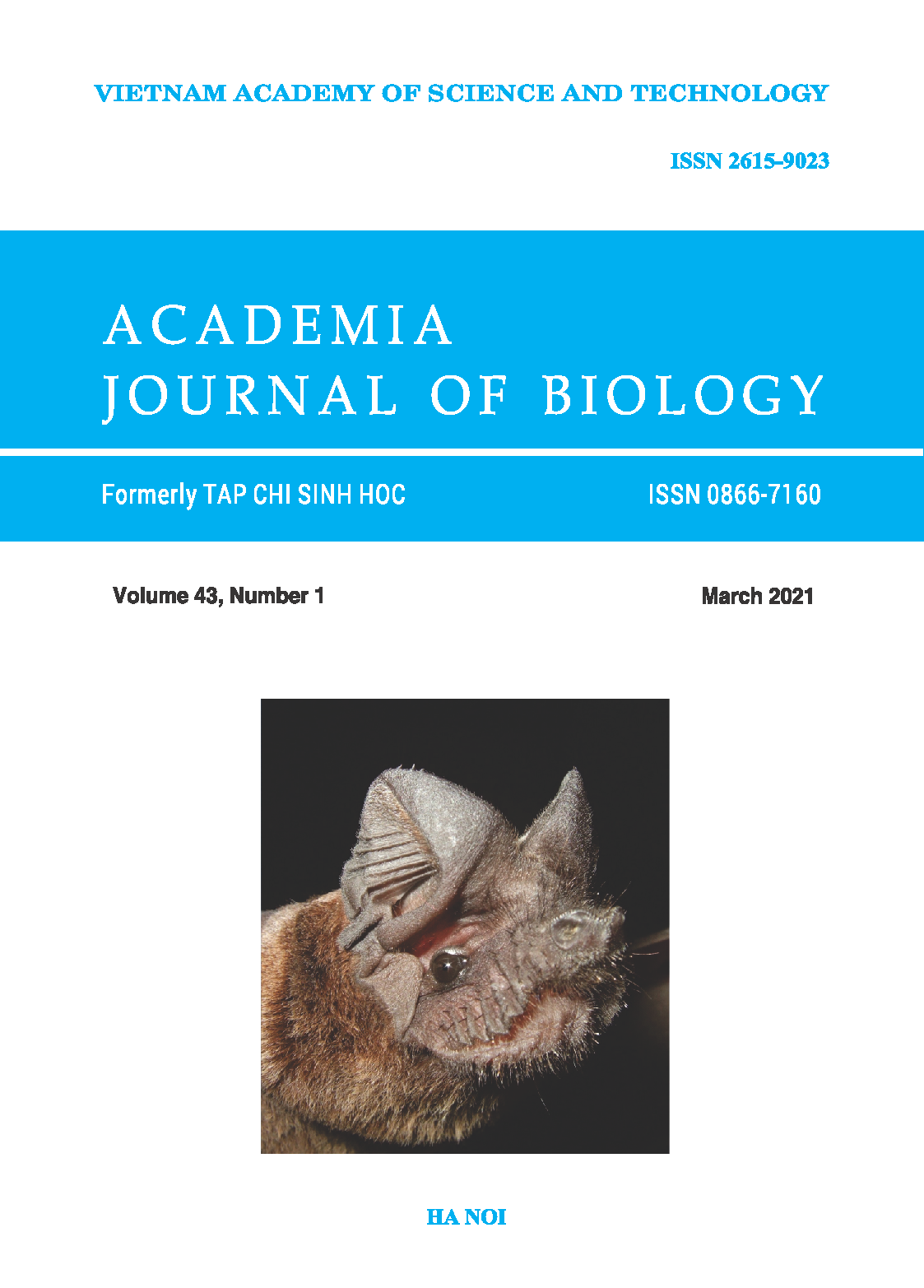Cloning, expression, and purification of Acrv tip protein from Aeromonas hydrophila using Escherichia coli host cells
Author affiliations
DOI:
https://doi.org/10.15625/2615-9023/15686Keywords:
AcrV, Aeromonas hydrophila, affinity chromatography, gene expression, recombinant protein.Abstract
Aeromonas spp. use T3SS to secrete and transport effector proteins to the host cells. These proteins play a major role in bacteria virulence by interfering with the signaling cascades and by disrupting the cytoskeleton structure of the host cell. Despite tremendous efforts, structural and functional information regarding AcrV tip protein of T3SS remains elusive. In this study, we cloned the gene encoding the AcrV protein from Aeromonas hydrophila AH-1 and inserted it into the pET-M expression vector. The pET-M vector containing AcrV gene was transformed and expressed in E.coli BL21 (DE3) cells. The recombinant AcrV protein was purified by affinity chromatography using Ni-NTA column. The obtained AcrV with high purity can be used for structural and functional studies.
Downloads
Metrics
References
Picking W. L., 2012. Ultrastructural analysis of IpaD at the tip of the nascent MxiH type III secretion apparatus of Shigella flexneri. Journal of molecular biology, 420: 29−39.
Fiorentini C., Barbieri E., Falzano L., Matarrese P., Baffone W., Pianetti A., Katouli M., Kühn I., Möllby R., Bruscolini F., 1998. Occurrence, diversity and pathogenicity of mesophilic Aeromonas in estuarine waters of the Italian coast of the Adriatic Sea. Journal of Applied Microbiology, 85: 501−511.
Goure J., Broz P., Attree O., Cornelis G. R., Attree I., 2005. Protective anti-V antibodies inhibit Pseudomonas and Yersinia translocon assembly within host membranes. The Journal of infectious diseases, 192: 218−225.
Lara-Tejero M., Galán J. E., 2019. The injectisome, a complex nanomachine for protein injection into mammalian cells, Protein Secretion in Bacteria, 245−259.
Mueller C. A., Broz P., Müller S. A., Ringler P., Erne-Brand F., Sorg I., Kuhn M., Engel A., Cornelis G. R., 2005. The V-antigen of Yersinia forms a distinct structure at the tip of injectisome needles. Science, 310: 674−676.
Pettersson J., Holmström A., Hill J., Leary S., Frithz‐Lindsten E., Von Euler‐Matell A., Carlsson E., Titball R., Forsberg Å., Wolf‐Watz H., 1999. The V‐antigen of Yersinia is surface exposed before target cell contact and involved in virulence protein translocation. Molecular Microbiology, 32: 961−976.
Shotts Jr E., Gaines Jr J., Martin L., Prestwood A., 1972. Aeromonas-induced deaths among fish and reptiles in an eutrophic inland lake. Journal of the American Veterinary Medical Association, 161: 603.
Thune R. L., Stanley L. A., Cooper R. K., 1993. Pathogenesis of gram-negative bacterial infections in warmwater fish. Annual Review of Fish Diseases, 3: 37−68.
Yu H., Rao P. S., Lee H., Vilches S., Merino S., Tomas J., Leung K., 2004. A type III secretion system is required for Aeromonas hydrophila AH-1 pathogenesis. Infection and immunity, 72: 1248−1256.










